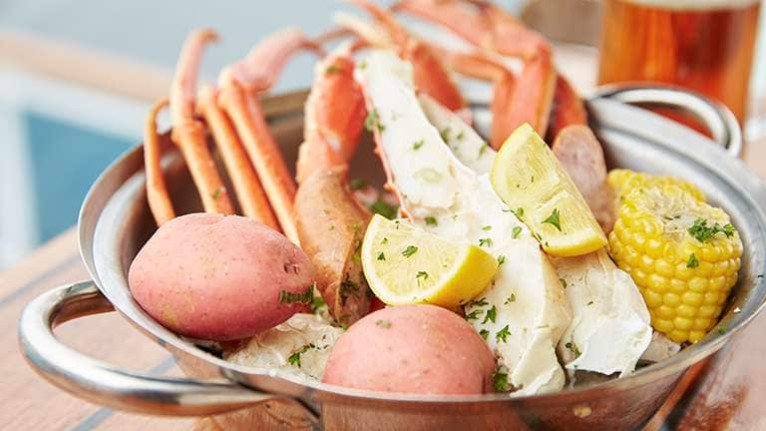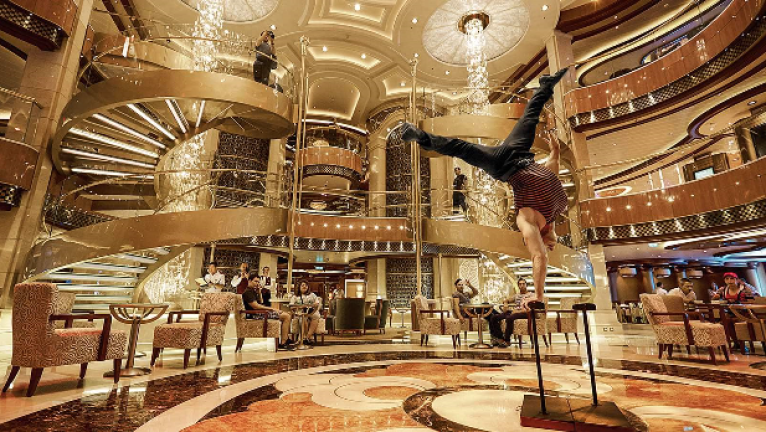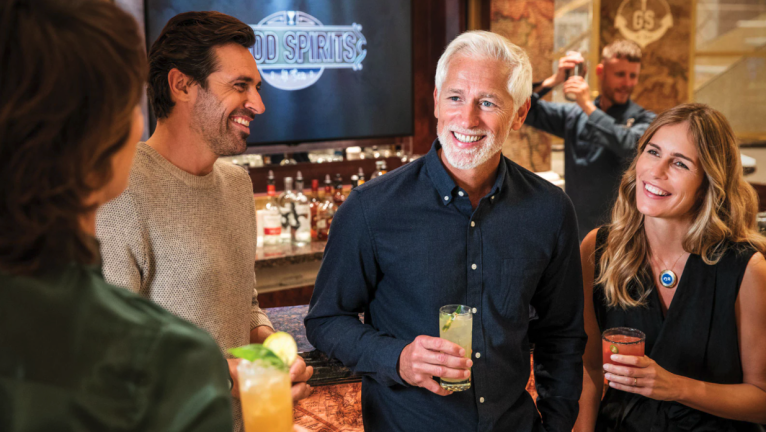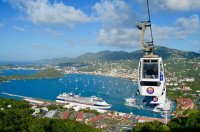(Prices correct as of today’s date, are updated daily, are subject to change and represent genuine availability at time of update).
Cruise only holidays are financially protected by ABTA. Fly cruise holidays are financially protected by Princess Cruises under ATOL number 6294
Please click here to check the essential travel requirements before booking this cruise.
Want to add a hotel stay or change your flights?
Just call our team of cruise specialists to help build your dream cruise holiday today!
Prices based on 2 people sharing. Cruise only price does not include flights. Fly-cruise price may vary by chosen UK airport.
Itinerary
Southampton
Lying near the head of Southampton Water, a peninsula between the estuaries of the Rivers Test and Itchen, Southampton is Britain’s largest cruise port. It has been one of England’s major ports since the Middle Ages, when it exported wool and hides from the hinterland and imported wine fro... Read More
Southampton
At Sea
Dun Laoghaire
Belfast
Greenock
At Sea
Kirkwall, Orkney Islands
Invergordon
Queensferry
At Sea
Southampton
Le Havre
At Sea
Bilbao
At Sea
Vigo
At Sea
At Sea
Ponta Delgada, Azores
At Sea
At Sea
At Sea
At Sea
At Sea
Saint John's
Saint Thomas
At Sea
At Sea
Grand Cayman
At Sea
At Sea
Galveston, Texas
What's Included with
Princess Cruises
Delve into cuisines from across the globe with various dining options when you hop on-board a Princess Cruises ship. Enjoy exclusive cocktail receptions, deck parties, themed nights and entertainment throughout the day and into the evening. When you choose Princess Cruises for your next adventure you can enjoy peace of mind that you have everything you need when gliding the waves. Discover everything that a Princess Cruises sailing has to offer when you opt for an all-inclusive cruise holiday.
Accommodation
Entertainment throughout the day and evening
Use of swimming pools, hot tubs, fitness centre and leisure facilities where available
Return flights included from a choice of UK airports (fly cruise bookings only)
Room service from 6am to 11pm
Port taxes
Youth programmes for babies to 17-year-olds
Adult only areas
Exclusive cocktail receptions and deck parties on-board
Sailaway parties, themed nights and deck parties
Lemonade, water and iced tea available in selected venues
Shuttle service to and from ports and airport where available
Explore Regal Princess










Chef's Table Lumiere
A Dazzling Dining Adventure
An extraordinary treat for both gastronomes and gourmet novices, the Chef’s Table Lumiere is a perfect culinary journey for any special occasion. Join a select group of guests for a behind-the-scenes galley tour with champagne and hors d’oeuvres, followed by an extravagant multi-course dinner created and hosted by the ship’s executive chef. Perfect for celebrating an anniversary or milestone, or just making your cruise holiday even more amazing.
Limited capacity, reservations required. Additional charge applies.






Movies Under the Stars
A Reel Treat Day or Night
Throughout the day and night, our exclusive open-air poolside amphitheatre is the go-to destination for feature films, thrilling concerts and exciting sporting events such as live football games. Cozy up under a fleece blanket in the comfortable lounger and feast on complimentary fresh-popped popcorn in the evening or delicious cookies and milk during the day, and enjoy that exciting car chase or mystery thriller on the giant screen.


The Sanctuary
Looking to get away? There's no doubt a cruise holiday can be the perfect way to escape from the stresses of the office. Life at sea is already relaxing, but those who want total peace and quiet will enjoy what The Sanctuary has to offer.
The Sanctuary is a quiet, outdoor spot for you to escape to when you simply want to relax and ignore everything else for a little while. This area of the ship is all about health and wellness in a completely stress-free setting. It's also adults-only, which only adds to the tranquil experience.
You'll be able to enjoy the very best that the "Serenity Stewards" have to offer. The Serenity Stewards are expert staff on hand to attend to your every need. Whether it's a refreshing bottle of Evian water or a chilled face towel, a steward will be able to provide it for you.
That's just the tip of the iceberg when it comes to services offered at The Sanctuary. Both singles and couples can enjoy a wide variety of massages in a private cabana setting, with offerings including Deep Tissue and Swedish massages.
This is also the perfect place to grab a light snack or healthy beverage, as this area of the ship features a full menu of tasty treats for passengers to take advantage of.

Youth Centre
Ages 3-7
There’s an exciting toddler area, a mini air hockey table, great arts and crafts stations, plus a space for group activities like movie nights.Offering dance parties, movies and cartoons, along with ice cream and pizza parties, your little ones can enjoy T-shirt colouring, theme nights and getting creative with art projects.
Ages 8-12
Offering games and activities like air hockey, skeeball, and video game stations – not to mention a dedicated lounge with a giant TV and arts and crafts tables. There are plenty of exciting activities for older kids to enjoy, including kids-only dinners, movies, PS2/PS3, Wii (and all the latest games), along with scavenger hunts, talent shows and sports tournaments. California Science Centre workshops and junior chef@sea educational classes are also on offer.
Ages 13-17
Featuring a new lounge area, perfect for meeting new friends, with skeeball, football, and great video games. In the teen-only exclusive lounges, junior cruisers can come and go as they please. Make new friends whilst enjoying PS2/PS3 and Wii games, football tables, sports competitions and late night movies. Take part in the shipboard Olympics, mocktail parties, DJ workshops, or check out the hot tub parties and formal dinners.
Deck 19 - Sky

- Sun Deck
- Lawn Court
- Shuffleboard
Deck 18 - The Sports

- Centre Court
- Golf Practice Cage
- Laser Shooting Range
- Movies Under The Stars
- Princess Sports Central
- Shuffleboard
- Table Tennis
- The Game Lounge
- The Greens
Deck 17 - Sun

- Bar
- Beach House Teen Lounge
- Camp Discovery Youth Center
- Fitness Center
- Hot Tub
- Platinum Studio
- Retreat Pool & Bar
- SeaWalk
- Skylight
- Teen Hot Tub
- Teen Open Area
- Terrace Pool
- The Sanctuary
Deck 16 - Lido

- Calypso Cabana
- Fountain Pool
- Horizon Bistro
- Horizon Court
- Horizon Terrace
- Hot Tubs
- Mermaid's Tail
- Outrigger Bar
- Prego Pizzeria
- SeaWalk
- Seaview Bar
- Swirls
- The Pastry Shop
- Trident Grill
- Interior cabins
- Balcony cabins
- Mini-Suite cabins
Deck 15 - Marina

- Interior cabins
- Balcony cabins
- Mini-Suite cabins
- Suites
Deck 14 - Riviera

- Wedding Chapel
- Concierge Lounge
- Interior cabins
- Balcony cabins
- Mini-Suite cabins
- Suites
Deck 12 - Aloha

- Interior cabins
- Balcony cabins
- Mini-Suite cabins
- Suites
Deck 11 - Baja

- Interior cabins
- Balcony cabins
- Mini-Suite cabins
- Suites
Deck 10 - Caribe

- Interior cabins
- Balcony cabins
- Mini-Suite cabins
- Suites
Deck 9 - Dolphin

- Interior cabins
- Balcony cabins
- Suites
Deck 8 - Emerald

- Interior cabins
- Balcony cabins
- Suite cabins
Deck 7 - Promenade

- Captain's Circle
- Bar
- Crooners Lounge & Bar
- Crown Grill
- Dance Floor
- Future Cruise Center
- Ocean Terrace (Seafood Bar)
- Princess Fine Arts Gallery
- Princess Live!
- Princess Live! Café
- Princess Theatre
- The Library
- The Shops of Princess
- Vista Lounge
- Wheelhouse Bar
Deck 6 - Fiesta

- Alfredo's Pizzeria
- Allegro Dining Room
- Bellini's
- Casino
- Churchill's
- Club 6
- Concerto Dining Room
- Photo-Video Gallery
- Princess Theatre
- Wine Cellar
Deck 5 - Plaza

- Celebrations
- Gelato
- Guest Services
- International Café
- International Dining Room
- Internet Café
- Lotus Spa
- Massage
- Sabatini's Italian Trattoria
- Shore Excursions
- Symphony Dining Room
- The Enclave
- Beauty Salon
- The Piazza
- Vines Bar
- Wine Cellar
Deck 4 - Gala

- Medical Centre
Regal Princess Cabins & Suites

Interior



Suite

























-large_thumb.jpg)









